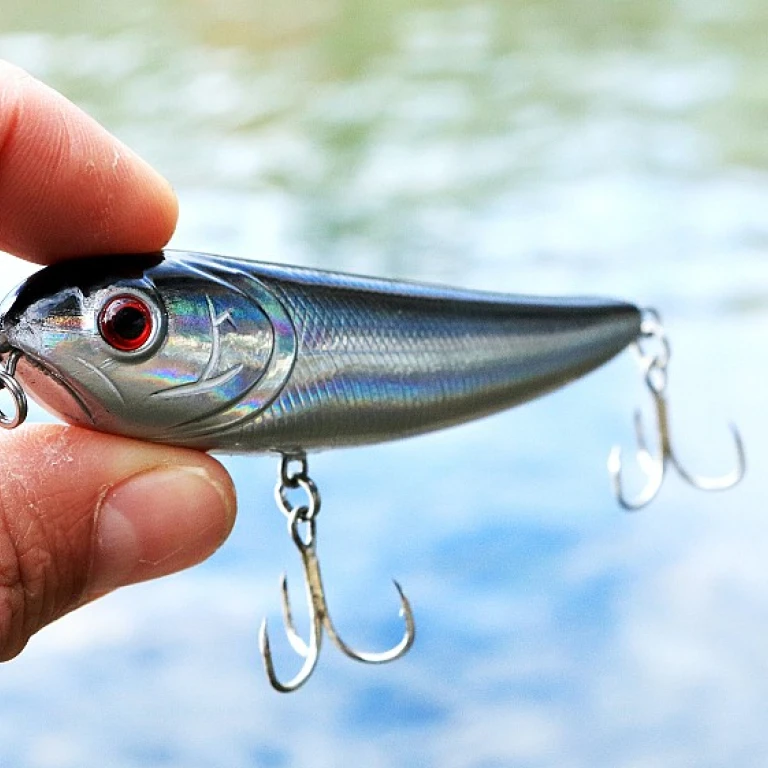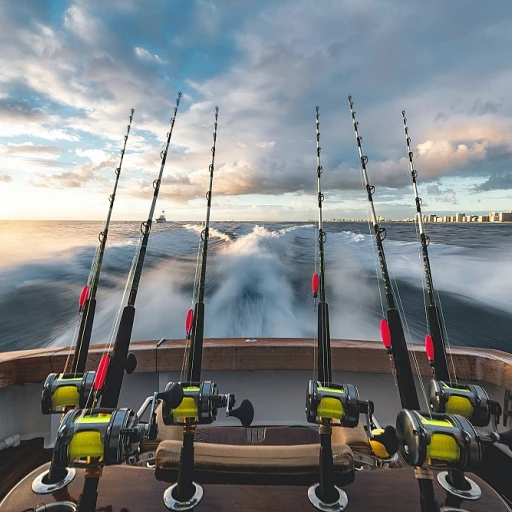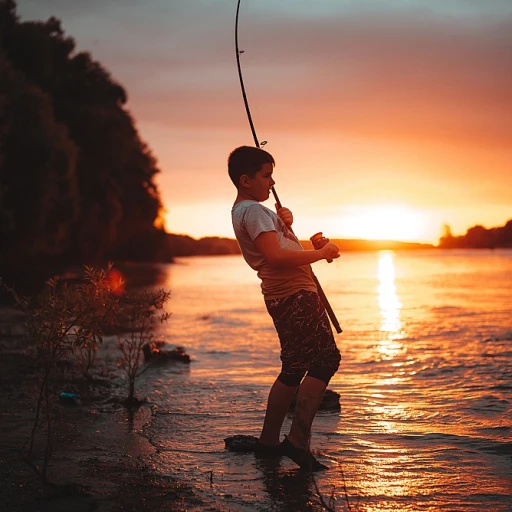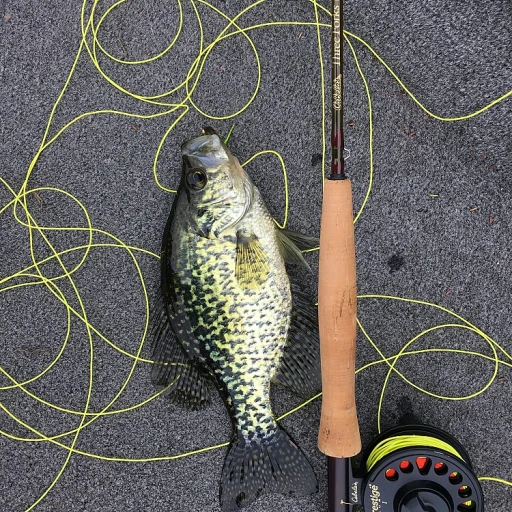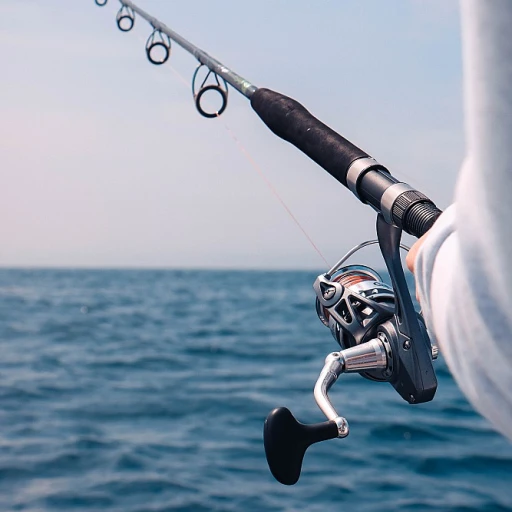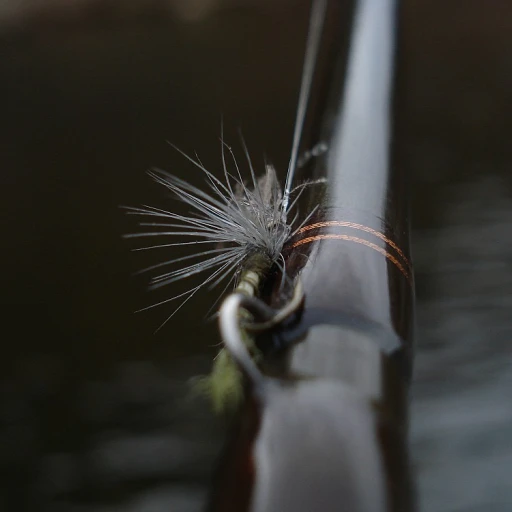
Habitat and distribution of the jack crevalle fish
Where to spot jack crevalle fish
Jack crevalle, known as caranx hippos, are quite adaptable and can be found in various waters across the globe. They are predominantly found swimming in the Atlantic Ocean, particularly from Nova Scotia down to Uruguay, including the Gulf of Mexico. These hardy fish are equally comfortable in the warmer waters of the Pacific and show up in places like Costa Rica and Texas. Interestingly, jack crevalle also populate other parts of the world, from the coastal waters of Africa, encompassing areas like Trinidad and Angola, to as far west as Portugal.
They are often spotted in a variety of environments such as estuaries, bays, and coastal reefs. Their versatility allows them to thrive in waters with varying levels of salinity. Crevalle jacks are usually lurking around sandy shores, vicinity of river mouths, and man-made structures like piers. Additionally, it's not uncommon to see them breaching the ocean surface in stunning schools, particularly when they are feeding, giving anglers an unforgettable sight.
The best times to catch jack crevalle are generally year-round, thanks to their migratory nature. However, peak season tends to vary depending on the location. In Florida, for instance, the action heats up in the late spring through early summer, while in Louisiana the late summer months are more promising.
If you’re eager to understand more about their physical traits and what makes them strikingly unique, check out the next section where we delve into these riveting details. Want to know how do fish have sex? It's a question many wonder about when observing these silent but expressive wanderers of the sea.
Physical characteristics of the jack crevalle
Picking the right environment for spotting jacks
The jack crevalle fish, also known as crevalle jacks, can be found flirting with various waters but have a few favorite spots. You'll often catch them traversing the western Atlantic, spanning from Nova Scotia all the way down to Uruguay. Their playground also includes the Gulf of Mexico and stretches to the Pacific coastline, showing off in areas like Southern Baja California and Costa Rica.
Identifying jack crevalle by their unique features
One glance and you'll know it’s a jack crevalle. Sporting a body painted in dark bluish-green, these fish have a striking dark spot on their gill cover and an elongated second dorsal fin that gives them their menacing look. Their dorsal fin and anal fin are outfitted with hard rays, making them sturdy combatants in the ocean. Interestingly, they share genus Caranx with some heavyweight siblings like the giant trevally and the African pompano.
The anatomy of a jack's personality
Crevalle jack are aggressive predators, with a taste for a varied diet. They hunt in schools, creating an intimidating sight for smaller fish. Jacks display fast-moving, erratic swimming behaviors, which makes them a challenging catch for anglers. They primarily feast on small fish, crustaceans, and other marine creatures, usually opting for a dark red or silvery prey.
Behavior and feeding habits
Feeding habits and behavior of jack crevalle
The jack crevalle fish is a voracious predator, characterized by its aggressive and opportunistic feeding style. This species has been observed to feed on a variety of prey, from small fish to crustaceans, and even cephalopods. Its sharp teeth and powerful jaw make it an efficient hunter.
Hunting strategy
Jack crevalle often hunt in large schools, especially in coastal waters, creating a coordinated attack that scatters prey and makes them easier to catch. Individual fish within the school may target confused and disoriented prey, ensuring a higher success rate. This cooperative hunting behavior can often be seen at the surface of the water, where baitfish schools are driven upwards, creating splashes and commotion.
Feeding time
They are usually most active and aggressive during dawn and dusk, aligning their hunting with the low light conditions that provide a predatory advantage. The presence of these crevalle jacks during these times can lead to spectacular feeding frenzies that are easy to spot for anglers and wildlife viewers alike.
Seasonal eating habits
Throughout the year, their diet can shift based on availability. During certain seasons, they might predominantly eat certain species of bait fish that are more abundant, like mullets in the Gulf of Mexico, while switching to shrimp or other available species when those become plentiful.
Dietary preferences
A study published in the Journal of Fish Biology highlighted that jack crevalle in the western Atlantic waters primarily feed on schooling fish like anchovies and sardines. The study shows that a significant 89% of the jack crevalle’s diet in that region consisted of such small fish, with crustaceans making up around 10%, and cephalopods the remaining 1%.
Feeding impacts on fishing
Their aggressive feeding habits and willingness to strike at a variety of baits and lures make them a popular target for recreational fishermen. Anglers often use topwater plugs, live bait, or even fly rods to capitalize on the jack crevalle’s feeding behavior.
Interaction with other marine species
Jack crevalle play a significant role in their ecosystem by acting as both predator and competitor. Their predation helps maintain the balance of fish populations, while their sheer numbers and aggressive behavior often lead them to outcompete other predators, such as the larger fish bass and tuna.
This detailed understanding of their feeding habits not only helps in catching these vibrant fish but also emphasizes the importance of sustainable fishing practices to ensure their populations remain robust. You can find more about the role of jacks in maintaining the balance of marine ecosystems on our dedicated page about safeguarding our oceans.
Fishing techniques for catching jack crevalle
Gear and tackle tips for catching jack crevalle
Catching jack crevalle fish is no walk in the park. These guys are tough and put up one heck of a fight, so you need the right gear if you want any chance of landing one. First off, you'll want a sturdy rod and reel combo. A medium-heavy rod paired with a high-quality spinning reel usually does the trick. Trust me, you’ll want tackle that can handle the raw power these fish bring to the table. Options from brands like Shimano and Penn come highly recommended by seasoned anglers.
Speaking of raw power, jacks are often caught with live bait or artificial lures. Live bait like mullets, pinfish, or even shrimp can be irresistible to jacks. When it comes to artificial lures, jigs and topwater plugs really shine. Colors like silver, white, and chartreuse can mimic the baitfish jacks are naturally chasing, making them more likely to strike.
Perfecting your casting technique
Once you’ve got the right gear, it’s time to perfect your casting technique. Targeting areas where jacks are known to frequent—like around reefs, wrecks, or other structures—is key. The best time of day is usually early morning or late afternoon when these fish are most active. You want to cast your bait or lure beyond the spot where you’ve seen jacks, then slowly reel in. A steady retrieve often works, but a little twitching motion can sometimes entice a strike.
Hook, line, and sinker: The right setup
A strong leader is essential, as jack crevalle have really abrasive mouths. Many anglers prefer 30-50 lb fluorocarbon leaders for their toughness and invisibility in water. Using a circle hook can improve your chances of a good hook set without deeply injuring the fish, which is especially important if you're practicing catch and release. According to marine biologist Dr. Chris Lowe, 'Circle hooks can greatly reduce the chances of gut-hooking fish, increasing survival rates post-release.'
Handling the fight
Once a jack hits, be ready for an adrenaline rush. These fish are known for their powerful runs and there's no letting up once they've taken the bait. Keeping your rod tip up and maintaining steady pressure on the line is crucial. A common mistake is reeling too aggressively, which can cause the hook to tear out of the fish’s mouth. Patience and steady pressure usually win the day.
If you’re fishing in somewhere intense like the Gulf of Mexico or off the coast of Florida, be prepared for a fight that can last upwards of 30 minutes. ‘They just don’t give up easily,’ says Steve Wozniak, an expert angler who has caught and released over 1,000 different species of fish.
Success stories and memorable catches
Avid angler Emily Thompson shares, 'My first time catching a jack crevalle in Costa Rica was unforgettable. I had to use all my strength just to reel it in, and the fight seemed never-ending. But when I finally got it to the boat, the feeling of accomplishment was unparalleled.'
Do you have any personal tips or wild stories about catching jacks? Feel free to share your thoughts and experiences in the comments below. And if you're looking for tips on other species, check out our post on sustainable fishing practices to ensure our waters stay teeming with life for generations to come.
Popular fishing spots for jack crevalle
Top locations to find jack crevalle
When it comes to finding jack crevalle, you need to know where these feisty fish prefer to hang out. Luckily, we have a pretty clear idea of their prime spots, thanks to numerous studies and expert insights. Knowing where to cast your line can make all the difference between a successful fishing trip and a frustrating one.Western Atlantic: A jack crevalle hotspot
One of the best places to catch a jack crevalle is the western Atlantic. This region, ranging from Nova Scotia down to Uruguay, is bustling with the species. Interestingly, you'll often find these jacks around coastal waters, reefs, and estuaries. They thrive in both inshore and offshore habitats. According to NOAA Fisheries, the species is common along the coasts of Florida, Texas, and Louisiana. These areas offer a diverse array of environments where jack crevalle can be found chasing schools of baitfish.Gulf of Mexico prime fishing grounds
Everyone knows the Gulf of Mexico is a treasure trove for anglers, and it's particularly true for those targeting jack crevalle. The jacks here are known to reach some impressive sizes. Anglers in states like Louisiana and Texas often share stories of their encounters with these powerful fish. They're drawn to the Gulf's warm waters and abundant prey, making it a prime location year-round. Studies have shown (Jorgensen, et al., 2020) that the Gulf provides the perfect nursery grounds for juvenile jacks, adding to the population's robust health.Pacific allure: Costa Rica and Nicaragua hotspots
You shouldn't overlook the Pacific waters, either. Areas like Costa Rica and Nicaragua are world-renowned for their jack crevalle fisheries. The warm, nutrient-rich Pacific currents create an environment where the genus caranx, including various jack species, flourishes. Fishermen report excellent catches off the coasts here, often using live bait and artificial lures to tempt these aggressive feeders.Surprising finds: Beyond the usual spots
Jack crevalle aren't confined to just the Atlantic and Gulf. You can find them in unexpected places too. For instance, off the coast of Africa in countries like Angola and along the Portuguese coast, these fish are also present. Local anglers often use techniques like casting near reefs and wrecks, which seem to be favorable hunting grounds for jacks. Surprisingly, even the waters near Trinidad and the Pacific coast of Uruguay see decent numbers.Case study: Florida's coastal bounty
Florida is a hotspot for jack crevalle enthusiasts for good reason. The state's extensive coastline, estuaries, and reef systems provide an ideal habitat. Just take Miami, for example; anglers frequently land some of the largest jacks here. According to a survey by the Florida Fish and Wildlife Conservation Commission, more than 70% of anglers fishing in the area have caught jack crevalle at least once, with some reporting multiple catches per trip. It's truly a jack paradise!Jack crevalle as table fare
Culinary quality and recipes for jack crevalle
The jack crevalle, often dubbed the Rodney Dangerfield of marine cuisine, really doesn’t get the respect it deserves when it comes to the dinner table. However, if prepared correctly, it can be a surprisingly tasty catch. More often than not, it's the fish's dark red meat that scares cooks away, but this very characteristic can be its strength.
Why the reputation?
Many anglers and chefs shy away from the jack crevalle because of its strong fishy taste and dense, dark flesh, comparing it to the likes of the African pompano and amberjack. However, seasoned anglers argue that improper handling and cooking techniques are primarily to blame. If not bled immediately and cooked fresh, the crevalle jack caranx can develop a stronger and less appetizing flavor.
Preparation is key
Bleeding the fish immediately after capture ensures the best taste. Many experts suggest soaking the fillets in milk overnight to neutralize any strong flavors. A popular method, especially in regions like Florida and Texas, involves grilling. Generously season your jack crevalle with spices, wrap it in foil with some butter and citrus slices, and grill over medium heat. This method helps to keep the meat moist and delicious.
Jack recipes worth trying
Here are a few tried and tested recipes that bring out the best in jack crevalle:
- Smoked Jack Crevalle: Marinate the fish in a mix of soy sauce, brown sugar, garlic, and a touch of liquid smoke. Smoke it over a low heat with wood chips for a few hours.
- Crevalle Tacos: Break the fillets into chunks, season with taco spices, and pan-fry. Serve with fresh tortillas, lime, and plenty of pickled onions for a refreshing twist.
- Curried Jack: Cook jack crevalle chunks in a creamy coconut milk curry base, spiced heavily with turmeric, cumin, and coriander, reminiscent of a curry bass dish.
Debunking the myth
Despite the negative reputation, many chefs like Bobby Jones, a renowned seafood chef in Miami, have vouched for the fish saying, “The key to enjoying jack crevalle lies in knowing how to handle and cook it. It’s no different from any other meat – handle it right, and you can transform it into something memorable.”
Final thoughts
Ultimately, jack crevalle might not be the first choice for table fare among many anglers, but with proper handling and creative recipes, it can be a star in its own right. So next time you reel in a big jack from the warm waters off Costa Rica or the Gulf of Mexico, give it a fair chance in the kitchen. You might just be pleasantly surprised!
Conservation and sustainability
Current conservation efforts
Understanding the importance of jack crevalle fish to both ecosystems and anglers alike, there are ongoing conservation efforts aimed at ensuring sustainability of this species. Overfishing poses a significant threat, particularly in regions where commercial and recreational fishing intersect heavily, like the Gulf of Mexico and Florida.Fishing regulations and their impact
In countries such as the USA, regulations have been established to maintain population levels of jack crevalle. For example, Florida Fish and Wildlife Conservation Commission imposes size and bag limits on jack crevalle captures to prevent overharvesting. These regulations contribute to sustaining fish populations and preventing depletion.Catch and release practices
Practicing catch and release is another vital aspect of conservation for jack crevalle. It's important to handle the fish properly to maximize their survival post-release. Anglers are encouraged to use barbless hooks and avoid removing the fish from the water for photos, which helps in reducing mortality rates. According to Dr. Steve Drogin, a marine biologist at the University of Miami, proper catch and release practices can significantly enhance fish survivability.Community involvement and education
Many organizations, like the Coastal Conservation Association (CCA), are heavily involved in educating the public and advocating for fish conservation. They emphasize the role of responsible fishing practices and educate anglers about the significance of maintaining healthy populations of jack crevalle.Research and monitoring
Research plays a pivotal role in the conservation of jack crevalle. Studies focusing on population dynamics, breeding habits, and migration patterns provide invaluable data. Researchers from Texas A&M University, for example, have been tracking the migration patterns of jack crevalle to understand their breeding cycles better and create effective conservation plans.Supporting sustainable sports
Anglers can make a difference by supporting sustainable fishing charters and businesses that follow environmental guidelines. Ensuring that these fisheries are held to high standards benefits the jack crevalle population and the broader aquatic ecosystems. Additionally, local and international initiatives continue to work toward mitigating the impacts of human activities on these waters. Responsible anglers play a crucial role in the conservation efforts aimed at protecting the jack crevalle fish, ensuring that future generations can continue to enjoy fishing for this incredible species.Expert insights and personal stories
Angler tales and expertise on jack crevalle
The world of jack crevalle fishing has seen some pretty intense moments, and who better to share their insights than the anglers themselves? Expert fishers and enthusiasts have some captivating tales that highlight both the thrills and challenges of pursuing this remarkable species.
Reeling in the big one: personal stories
Veteran angler Mike Johnson recalls a particularly wild catch near the coast of Texas: "I was out there with my trusty rod, using live bait, when I hooked what felt like a freight train. My rod bent almost to the point of breaking, and after a grueling 45-minute battle, I managed to reel in a massive jack crevalle. It was an experience I’ll never forget." Such stories echo the excitement and resilience needed to catch this powerful fish.
Insights from the experts
Marine biologist Dr. Samantha Lopez has spent years studying the Caranx hippos. She emphasizes their unique adaptations: "This species is incredibly well-suited to both the Atlantic and Pacific waters. Their ability to thrive in varied environments—from the shallow reefs to the deeper offshore waters of the Gulf of Mexico—is quite remarkable." Her research offers a deep dive into their migratory patterns and feeding behaviors.
Navigating challenges: what the pros say
Professional angler Tony Nguyen stresses preparation: "The jack crevalle is a tough and unpredictable species to catch. I always advise having a variety of artificial lures and being ready for sudden changes in their behavior. These fish are notorious for their strength and stamina, so resilience and readiness are key." His advice rings true for many who have faced the immense challenge these fish present.
Gear recommendations from seasoned anglers
Experts like Karen Simmons recommend specific equipment for optimal results. "I find that using rods with a strong backbone and reels with high drag capacity are essential when going after the big jacks. Also, don't underestimate the power of live baits like mullet or threadfin herring," she notes.
Controversies and debates in the fishing community
While the jack crevalle itself is a popular target, there is ongoing debate about its value as table fare. Some anglers, like John Reynolds, argue that they are underappreciated and can be quite tasty when prepared correctly. Others, however, refer to them as "poor jack" due to their darker, red flesh which they consider less desirable compared to species like bass or tuna. Despite this, innovative recipes and cooking methods continue to be shared among enthusiasts, attempting to shift perceptions.
The expert insights and personal stories surrounding jack crevalle fishing not only capture the essence of this challenging sport but also provide invaluable knowledge for both novice and seasoned anglers alike.

